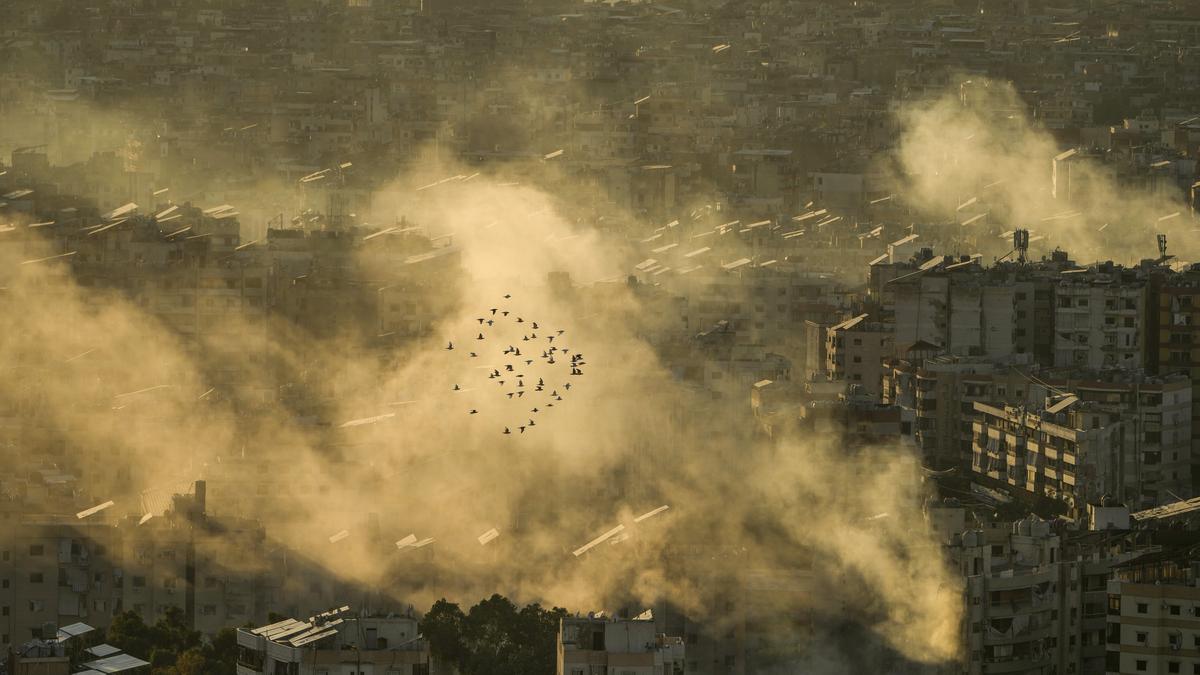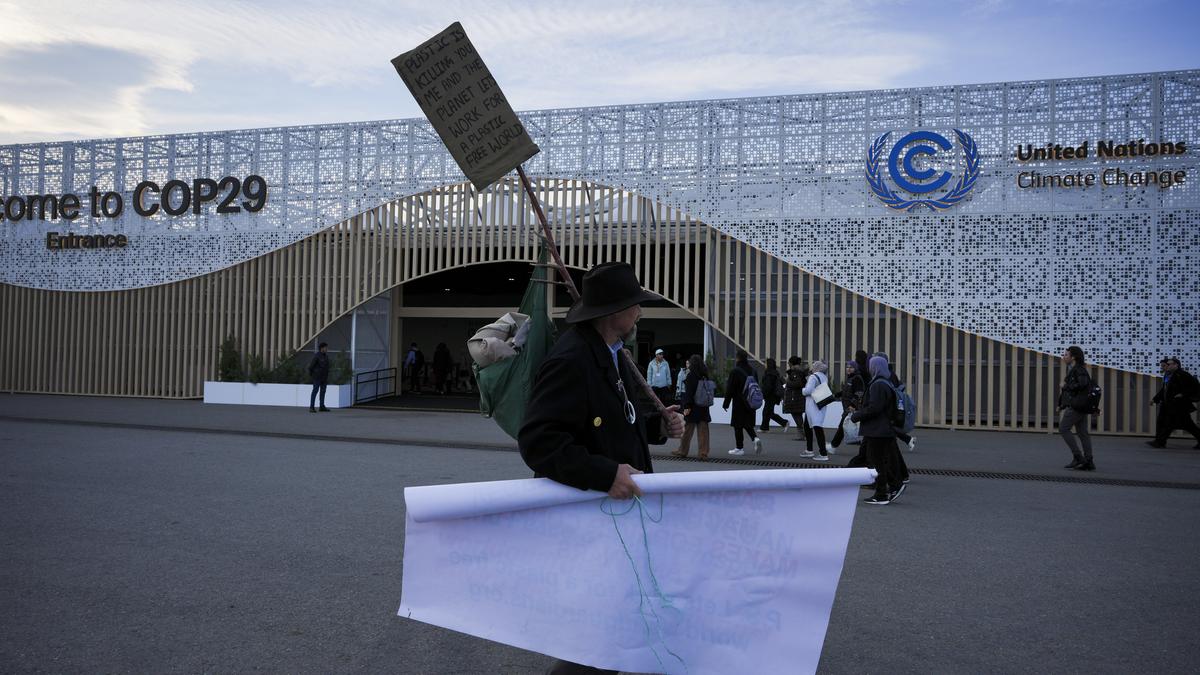(This article is part of the View From India newsletter curated by The Hindu’s foreign affairs experts. To get the newsletter in your inbox every Monday, subscribe here.)
Israel’s air strikes in Iran on October 26 have taken West Asia a step closer towards a regional war. The attack itself was not surprising. Israel had promised that it would strike Iran in retaliation for the latter’s ballistic missile attack at Israel on October 1. The question was what Israel would target. Sections in Israel’s political class had said that the Iranian attack was an opportunity for Israel to ‘destroy’ Iran’s nuclear programme. Some said Israel should target Iran’s oil fields or ports to exact a heavy economic price from the already sanctions-hit Islamic Republic. Some others suggested that Israel should target Iran’s senior military figures, especially IRGC commanders. But Benjamin Netanyahu, the Israeli Prime Minister, seemed to have ignored those suggestions and settled for military sites as targets.
To be sure, the attack itself marked an escalation in the crisis. In April, when Israel attacked Iran in retaliation for Tehran’s first direct attack at Israel, it targeted an air defence system in Isfahan and did not even claim the attack. Israel in the past had carried out several operations in Iran but never owned them up. But this time, when Israeli jets were still in Iranian air space, the IDF announced that it was carrying out an attack in Iran. This marked a change in Israel’s conflict with Iran and is a signal that Israel would directly attack Iran if the latter hit back. But at the same time, by deciding to avoid hitting Iran’s critical infrastructure such as its nuclear sites and oil fields and refiners, Israel also shows signs of caution. Either under pressure from the U.S. (President Joe Biden had publicly voiced his opposition to attacking Iran’s nuclear sites) or by its own strategic assessment, Israel is not ready for a full scale war—not yet.
Where does it leave Iran? Remember, it was Israel that took the war to Iran, not the other way around. After Israel launched its war on Gaza, it also started targeting Iranian officers in Syria. It killed a senior IRGC commander in Damascus in December 2023. And in April, Israel bombed the Iranian embassy complex in Damascus. It was after the embassy building bombing that Iran launched its first direct attack against Israel. But that did not stop Israel. In July-end Israel killed Ismail Haniyeh, the Hamas political chief, in Tehran, the Iranian capital. In retaliation, on October 1, Iran launched its second attack, which hit at least two Israeli military bases. And now, Israel has carried out its retaliatory attack.
The Iranian media initially played down the attack, claiming that Iran’s air defence had ‘successfully thwarted’ the Israeli aggression. But on October 27, Ayatollah Khamenei, the Supreme Leader, said Iran should neither exaggerate nor play down the damages caused by the Israeli strikes. Immediately after, Iran’s President Masoud Pezeshkian said Tehran would give appropriate response to Israel. The next day, the Foreign Ministry as well as the Quds Force, the overseas arm of the IRGC, said Iran will retaliate “with all the tools available”, without giving more details.
Iran faces difficult choices here. Israel carried out three waves of attacks on its soil on October 26 that lasted for hours. That all Israeli planes returned home safely after such a detailed attack tells a lot about Iran’s air defence. According to the IDF, the Israeli strikes targeted Iran’s air defences as well as missile production facilities. If Iran’s air defences were attacked, that leaves the country further vulnerable for future Israeli attacks. But will this act as a deterrent? If Iran doesn’t respond , that will further weaken its deterrence against Israel in the ongoing confrontation. And there is no guarantee that Israel would stop attacking Iranian assets and officers in the region even if Iran doesn’t respond this time. But if Iran responds, that could trigger another strike from Israel. Iran doesn’t see any way out of these cyclical strikes and counter strikes.
As of now, Iran is threatening revenge with caution. Whatever it decides will decide the next phase of the West Asian conflict. But Iran is likely to wait until the U.S. elections are over before it makes the next move.
The Top Five
1. Caught in intersections, the Harris multicultural tent
The Trump-Vance campaign is trying to trigger conflicts in the Democrat tent to dent the Democrats’ appeal to multiple group identities, writes Varghese K. George.
2. How will LAC agreement pan out on the border?
What follows the disengagement between Indian and Chinese troops at Depsang and Demchok in the eastern Ladakh sector? What is the status at the other friction points? How did India and China arrive at an agreement post the Galwan clash of 2020? What happens to the buffer zones? write Dinakar Peri,Vijaita Singh.
3. Pashtun Tahafuz Movement: Dissent in the mountains
Pakistani authorities have banned the movement that has organised tens of thousands of Pashtuns over the years, demanding protection from persecution, writes Priyali Prakash.
Russia’s hosting of the 16th BRICS Summit in Kazan had several messages. This was the biggest such conference in Russia since the Ukraine war began in 2022. With leaders of nine countries arriving as BRICS and BRICS partner countries, and about 30 leaders of the Global South attending a special BRICS outreach conference, Russian President Vladimir Putin dispelled any notion that Russia had been “isolated” due to Ukraine, writes The Hindu in this editorial.
5. Trump gains among young men, Harris seeks votes from women, Republicans
The pattern is consistent with 2016’s outcomes. Democratic Candidate Hilary Clinton won the female vote by 15 points, while Mr. Trump won the male vote by 11 points, Sriram Lakshman reports from Washington.
Published – October 29, 2024 09:17 am IST






